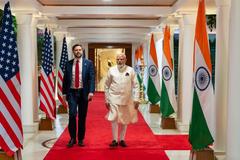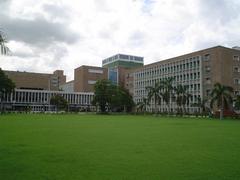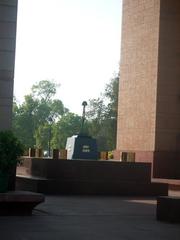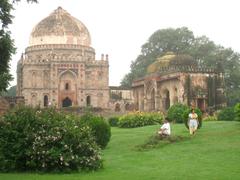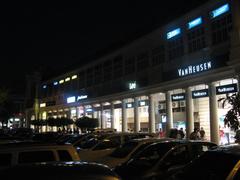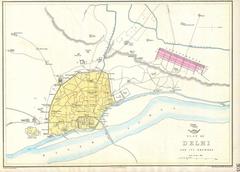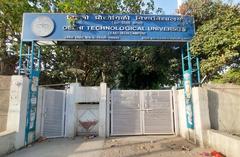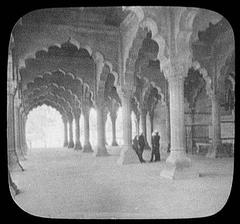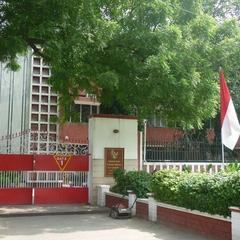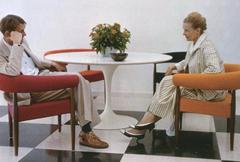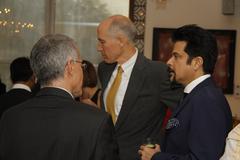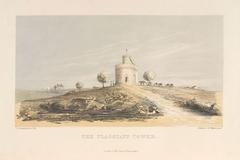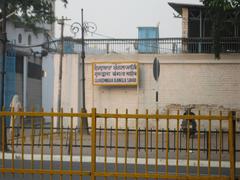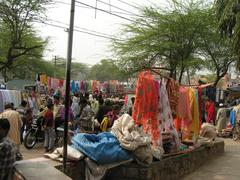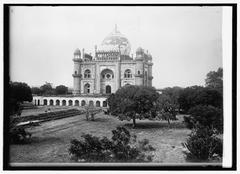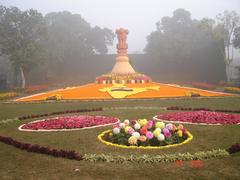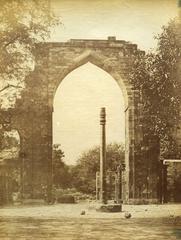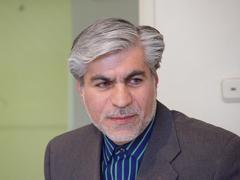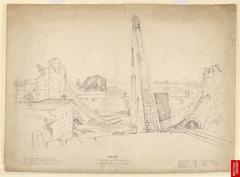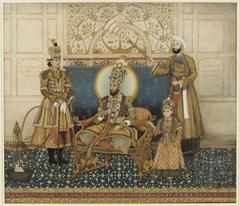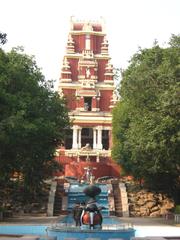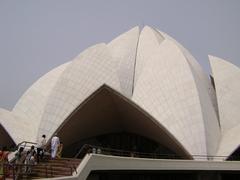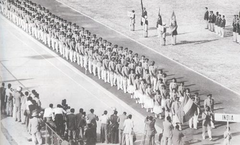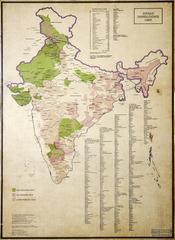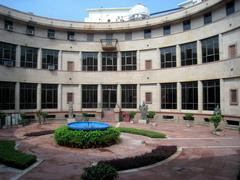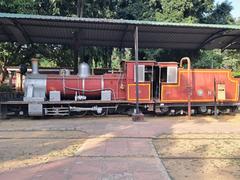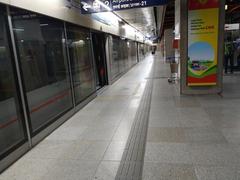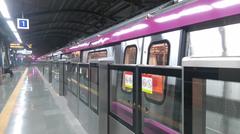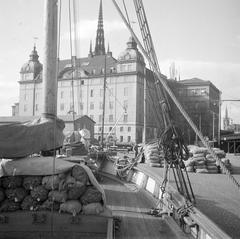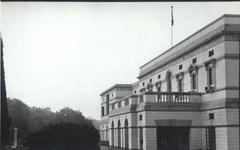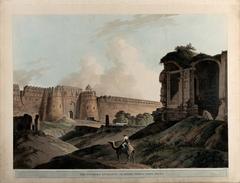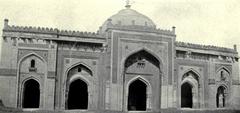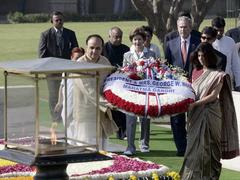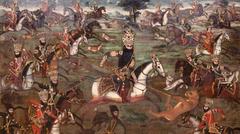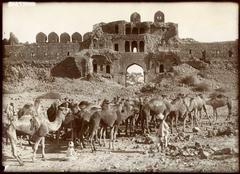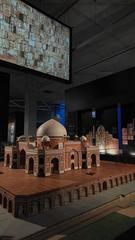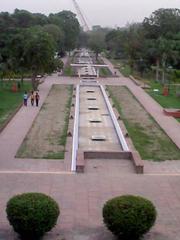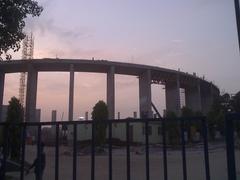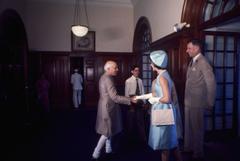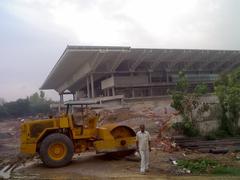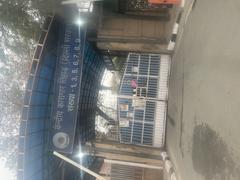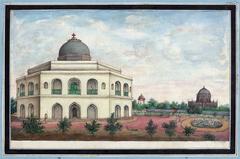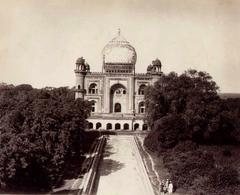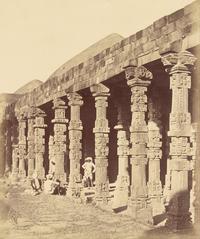Jawaharlal Nehru Stadium, New Delhi: Visiting Hours, Tickets, and Comprehensive Guide
Date: 14/06/2025
Introduction
Jawaharlal Nehru Stadium, centrally located in New Delhi, stands as a testament to India’s sporting aspirations and architectural ingenuity. Since its inauguration for the 1982 Asian Games, it has evolved into one of the country’s largest and most versatile sports and cultural venues. The stadium is not only a hub for athletics and football but also a significant architectural landmark, blending advanced engineering with motifs inspired by Indian heritage. This detailed guide offers essential information on visiting hours, ticketing, transportation, facilities, and nearby attractions, helping you plan an enriching visit to this iconic New Delhi historical site (Wikiwand; Sports Authority of India; Cricket Stadium).
Table of Contents
- Origins and Historical Milestones
- Architectural Significance
- Visitor Information
- Cultural and Urban Impact
- Frequently Asked Questions (FAQ)
- Visit Planning Tips
- Summary
- References
Origins and Historical Milestones
Inception and Legacy
Constructed as the central venue for the 1982 Asian Games, Jawaharlal Nehru Stadium marked India’s entry into the league of nations capable of hosting major international sporting events. Designed with a capacity for over 78,000 spectators, the stadium was the heart of the Games, which brought together over 3,400 athletes from 33 countries (Wikiwand). Over the decades, the stadium has hosted landmark occasions, including the 1989 Asian Championships in Athletics, multiple international football matches, and the home games of the Indian Super League’s Delhi Dynamos. It also famously staged the opening and closing ceremonies of the 2010 Commonwealth Games, after a significant renovation.
Renovation and Modernization
A transformative renovation took place between 2007 and 2010, led by the German firm Gerkan, Marg and Partners (gmp). This upgrade, costing nearly ₹961 crore, reduced capacity to 60,254 seats but introduced world-class amenities, a new tensile membrane roof, and enhanced accessibility. The stadium now meets global standards for football, athletics, and large-scale cultural events (e-architect; gmp.de).
Architectural Significance
Design and Engineering
Jawaharlal Nehru Stadium’s architecture is a blend of international innovation and Indian inspiration. Its most prominent feature is the massive tensile membrane roof, covering 53,800 square meters—one of the largest of its kind in the world. The roof, supported by an elliptical steel frame with a spoked wheel structure, provides both shelter and a dramatic visual profile (gmp.de). The design team, led by Volkwin Marg and Hubert Nien-hoff, ensured harmony with nearby historical sites by sensitively integrating the stadium within the urban landscape, including clear views of adjacent mausoleums.
Functional Versatility
With a current capacity of 60,254, the stadium is India’s fourth largest and can accommodate up to 100,000 guests for certain events. It supports a variety of sports—football, athletics, and previously cricket—as well as concerts, exhibitions, and national ceremonies (Wikiwand; Cricket Stadium). Modern facilities include upgraded seating, athlete and media zones, VIP lounges, and sustainable features like energy-efficient lighting.
Visitor Information
Visiting Hours
- General Opening: 9:00 AM to 6:00 PM daily (non-event days; subject to change during events)
- Event Days: Gates typically open 2 hours before scheduled start time
- Guided Tours: Available on select weekdays; advance booking recommended
Always verify current timings via the official website or event organizers, especially before major events.
Ticketing Details
- Entry: Free on non-event days for general exploration
- Event Tickets: Prices vary by event and seating category, typically INR 50–300 for tours and INR 200–2,000 for major events
- How to Buy:
- Online via BookMyShow, Ticketmaster, or authorized platforms
- At the stadium box office
Advance booking is advised for high-demand events.
Accessibility and Facilities
- Transport:
- Metro: Jawaharlal Nehru Stadium Metro Station (Violet Line)
- Bus: Multiple city routes
- Taxi/Auto: Readily available
- Parking: Ample but fills quickly during events
- Differently-abled Access: Ramps, accessible restrooms, reserved seating
- Amenities: Food courts, restrooms, merchandise shops, security screening, medical and first-aid stations
- Safety: Security checks at entry points; emergency protocols in place
Event Experience
Jawaharlal Nehru Stadium hosts a vibrant calendar of events, from Indian Super League football matches and national athletics to international concerts and cultural festivals (Songkick, Jambase). The stadium’s design ensures excellent sightlines and an electrifying atmosphere.
Guided Tours
Guided tours offer behind-the-scenes access to VIP areas, athlete zones, and the main pitch, along with insights into the stadium’s history and architecture. These are available by prior arrangement.
Nearby Attractions
Located in the heart of New Delhi, the stadium is close to:
- India Gate: Iconic war memorial, 3 km away
- Lodhi Gardens: Historic gardens and tombs, 4 km away
- National Gallery of Modern Art: 5 km away
- Humayun’s Tomb and Khan Market: Short drive from the stadium
Combining a stadium visit with these landmarks offers a rich cultural and historical experience.
Cultural and Urban Impact
National Symbolism
Named after India’s first Prime Minister, Jawaharlal Nehru, the stadium represents the nation’s post-independence ambitions and its emergence as a global sporting and cultural power. It anchors the Jawaharlal Nehru Sports Complex, home to the Indian Olympic Association, Sports Authority of India, and key sports ministries (Sportsmatik).
Urban Development
The stadium’s presence has spurred improvements in transport, hospitality, and recreation in central Delhi. It also serves as a community hub, hosting public health initiatives and civic events.
Frequently Asked Questions (FAQ)
Q: What are the regular visiting hours?
A: Generally 9:00 AM to 6:00 PM, but check the official website during event periods.
Q: How do I book tickets?
A: Online through authorized platforms or at the stadium box office. Early booking is recommended for major events.
Q: Is the stadium accessible for differently-abled visitors?
A: Yes, with ramps, designated seating, and accessible facilities.
Q: Are guided tours available?
A: Yes, by prior appointment on select weekdays.
Q: Can I bring outside food and drinks?
A: Outside food and drinks are typically not allowed during events.
Q: What are the best transport options?
A: Metro (JLN Stadium Station), city buses, and taxis; parking is available but limited during large events.
Visit Planning Tips
- Check event schedules and book tickets in advance.
- Arrive early, especially for high-attendance events.
- Use public transport to avoid parking hassles.
- Bring only essentials—avoid large bags and prohibited items.
- Explore nearby historical sites to enrich your visit.
- Dress appropriately for Delhi’s weather and stay hydrated.
Summary
Jawaharlal Nehru Stadium is a cornerstone of India’s sports and cultural scene, blending storied heritage with modern amenities. Its central location, architectural significance, and diverse calendar of events make it a must-visit destination in New Delhi. By staying informed about visiting hours, ticketing, and local attractions, you can fully immerse yourself in its vibrant atmosphere. For real-time updates, ticket alerts, and exclusive offers, download the Audiala app and follow official channels.
References
- Wikiwand
- Sports Authority of India
- Cricket Stadium
- e-architect
- gmp.de
- Songkick
- Jambase
- Sportsmatik
- Delhi Travel
- Yometro
